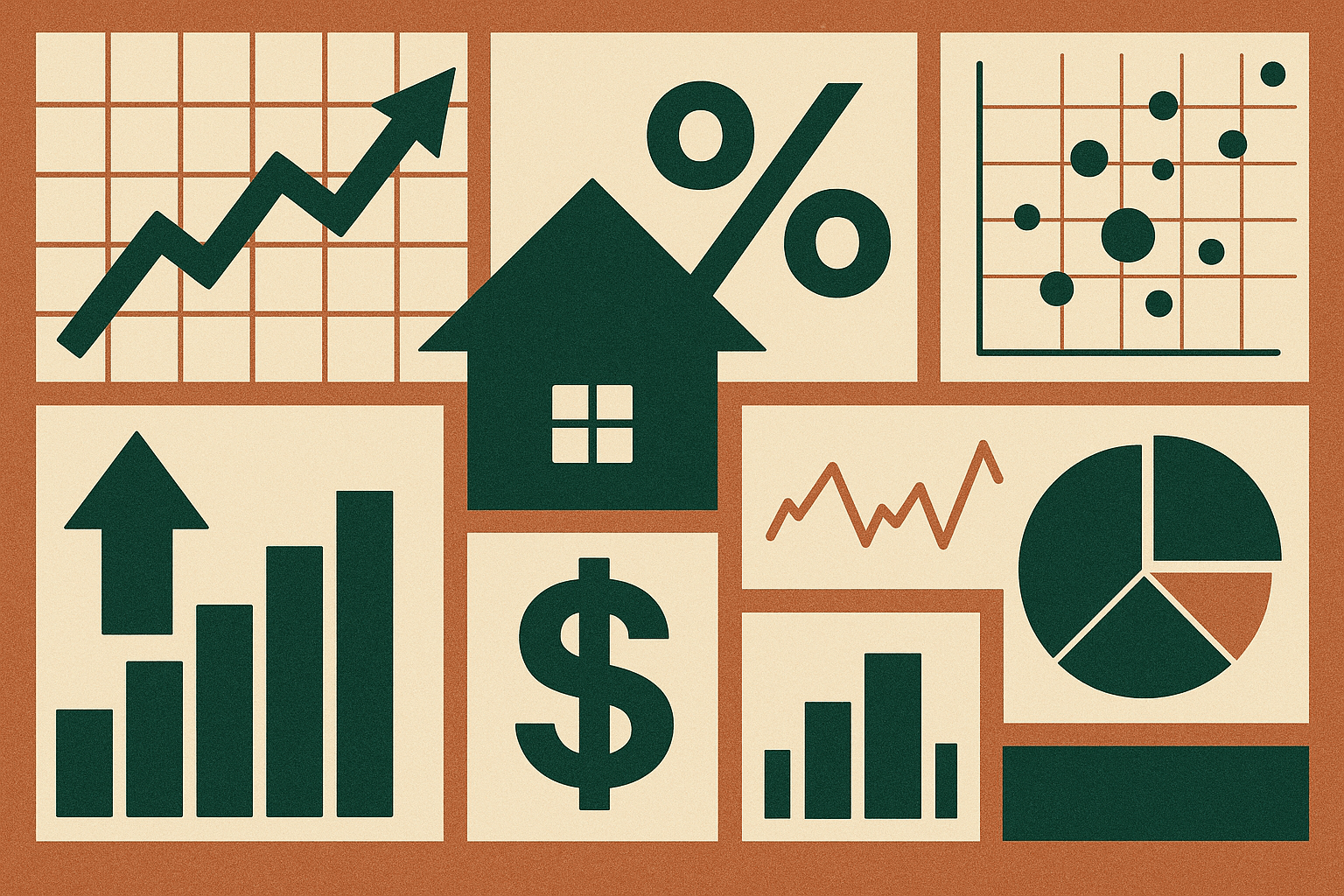Invest
Rate anxiety fades, affordability bites: What Australia’s property market shift means for business
Invest
Rate anxiety fades, affordability bites: What Australia’s property market shift means for business
Australian buyers are no longer driven primarily by interest rate fears; the binding constraint is affordability. New research shows price pressure, not policy moves, is shaping behaviour—forcing banks, developers and proptechs to rethink their playbooks.
Rate anxiety fades, affordability bites: What Australia’s property market shift means for business
Australian buyers are no longer driven primarily by interest rate fears; the binding constraint is affordability. New research shows price pressure, not policy moves, is shaping behaviour—forcing banks, developers and proptechs to rethink their playbooks.

With the market valued at about AUD 234.6 billion in 2024 and projected to grow to roughly AUD 331 billion by 2034, the prize remains significant for operators who can unlock supply, serviceability and customer trust. The winners will tackle cost and capacity, not just cycle timing.
Key implication: The centre of gravity in Australia’s housing market has shifted from rate sensitivity to affordability. In practice, that means businesses should re-optimise for serviceability, supply and product design rather than betting on the next cash rate move.
Market context: stable rates, stubborn prices
After a bruising tightening cycle, borrowing costs have stabilised long enough for buyers to adapt. Industry polling shows rate anxiety is no longer the headline constraint. InfoTrack’s 2025 State of Real Estate points to a marked fall in rate sensitivity, with affordability—specifically high purchase prices—now the top concern for buyers, cited by around 27% of respondents. Lee Bailie, Head of Property Australia at InfoTrack, notes that buyers are increasingly factoring rates into their baseline assumptions and refocusing on price and product fit.
The macro backdrop is still constructive. Australia’s real estate market was valued at approximately AUD 234.62 billion in 2024 and is projected to grow at a 3.5% CAGR through 2034, reaching about AUD 330.95 billion. Population growth, constrained supply pipelines and persistent rental tightness remain core demand drivers. In short: the market is expanding, but cost and capacity are the chokepoints.

Business impact: who gains and who feels the pinch
For lenders, the pivot from rate fear to affordability raises a different risk/reward calculus. Volume will accrue to institutions that improve serviceability outcomes—through sharper expense verification, income recognition for modern work patterns, and product flexibility (split loans, offset accounts, and features that help borrowers build buffers). Pricing power shifts from teaser-rate tactics to holistic value: speed to yes, certainty of settlement and proactive repricing protocols.
Developers face a two-speed market. Premium, scarce-located stock continues to clear, while broadacre and mid-market projects are capped by buyer budgets and construction costs. Cost engineering, standardised designs and offsite construction can restore feasibility. Build-to-rent (BTR) and land-lease communities look structurally advantaged: they align with affordability realities while offering institutional grade, inflation-resilient cash flows.
For agents and conveyancers, the operational challenge is throughput. If buyers are less spooked by rate headlines, they transact when product and price align. That makes pipeline visibility, digital contracting and milestone certainty vital. Proptech that reduces fall-throughs, compresses settlement timelines and detects compliance issues earlier in the journey will win share.
Competitive edge: execute on the “three Ss”—serviceability, supply and substitution
Forward-leaning operators can build advantage across three levers:
- Serviceability: Optimise borrowing capacity within prudential guardrails. For banks, that means better use of verified income (e.g., consistent gig earnings), dynamic expense modelling and responsible use of family guarantees. For brokers, pre-qualification accuracy is a growth engine.
- Supply: Shift capital and capability to stock that clears—medium-density infill near transport, BTR, and turnkey townhouses where buyers can trade space for price-cut certainty.
- Substitution: Help customers switch not just lenders but product archetypes. Rent-to-own pilots, shared-equity structures and long-date fixed or capped-rate options can ease price pain without breaching risk appetite.
The strategic north star: turn affordability from a constraint into a design brief.
Framework lens: PESTLE and Five Forces
Political/Regulatory: Prudential buffers remain significant, keeping a lid on maximum borrowing. Planning reform and incentives for new supply (including BTR) are the most consequential levers for affordability.
Economic: Stable rates reduce volatility but do not lower entry prices. Wage growth, migration and construction costs drive the affordability equation more than micro rate moves.
Social: Households are trading space for location and amenity. Younger buyers value certainty and total cost of ownership (strata, utilities, transport) over headline price alone.
Technological: Automated valuation models, digital conveyancing and open banking are compressing time-to-yes and lowering fraud risk—key to boosting throughput and trust.
Legal/Environmental: Energy standards and disclosure rules elevate the importance of efficient builds; green upgrades can improve serviceability via lower running costs.
Competitive intensity is rising among non-major lenders targeting niches ignored by the big four, while suppliers (builders and trades) retain pricing power due to labour and materials constraints. Bargaining power of buyers is mixed: high demand for well-located stock persists, but fatigued sentiment can be leveraged via incentives on the fringes.
Implementation reality: constraints don’t vanish with calmer rates
Execution is hard because the binding constraints are operational. Construction capacity, development timelines and compliance costs weigh on feasibility. Prudential settings (such as serviceability buffers) protect the system but cap the top end of borrowing. For corporates, the playbook is pragmatic:
- Remodel feasibility with a cost discipline lens: standardise floorplans, negotiate multi-year supply contracts, and use offsite manufacturing to smooth labour peaks.
- Rebuild trust and certainty: service-level guarantees for approvals and settlements; transparent variation pricing; proactive communication when supply chain shocks hit.
- Harness Open Banking: faster, consented income and expense verification can lift conversion rates and reduce fraud.
Technical deep-dive: product design for an affordability-first market
Where interest-rate hedging once dominated the conversation, product innovation now orbits around cash flow and certainty. Split loans and offset accounts allow borrowers to manage liquidity and prepay when they can. Features like redraw access, rate caps, or step-down pricing for on-time repayment can reduce perceived risk without blunt discounting. Embedded insurance for income disruption and green-home upgrades financed at mortgage rates can both protect households and enhance long-run serviceability.
Critically, credit decisioning should move beyond static buffers to dynamic affordability measures: verified net-of-utilities cash flow, property energy efficiency (lower running costs), and transport accessibility (reduced commuting expenses) all improve true capacity to repay.
Outlook and scenarios: where the next two years could land
Three working scenarios frame decisions:
- Stable rates, sticky prices: Base case. Volumes improve modestly as buyers adapt, but the affordability ceiling persists until supply catches up. Best strategy: invest in throughput, BTR, and mid-market product.
- Gradual cuts, gradual relief: If inflation drifts lower and policy eases, serviceability improves, but new demand may push prices higher unless supply accelerates. Best strategy: pre-permitting land banks and rapid-release designs.
- Upside inflation shock: A less likely but plausible tail risk. Renewed tightening would stress thinly buffered households. Best strategy: strengthen arrears early-warning and hardship pathways; favour resilient rental assets.
The throughline: affordability will remain the decisive variable. Rate stability buys time; it does not solve price pressure. Leaders who treat affordability as a solvable design problem—rather than a macro lament—will capture outsized share.

Property
Hidden cost, higher prices: Why a council fee fight matters for Australia’s housing pipeline
A dispute between the Housing Industry Association and Goulburn Mulwaree Council over development cost estimates is more than a local skirmish—it spotlights a systemic pricing lever that can compound ...Read more

Property
Why Aussie homes are turning into stepping stones for the new generation
A new cohort of buyers is treating their first property as a launchpad, not a destination—and the mortgage industry is pivoting in lockstep. Read more

Property
Rate cuts ignite an upsizing wave: how to win the next phase of Australia’s housing cycle
Cheaper money is reviving borrowing capacity and confidence, and upsizers are back in force — most visibly at auctions where clearance rates have lifted to yearly highs. The ripple effects extend ...Read more

Property
South Australia's first-home buyer boom fuels a frenzy for lenders, builders and retailers
South Australia has quietly become the nation’s most active first‑home buyer market, fuelled by falling rates, generous state incentives and a responsive broker ecosystem. Read more

Property
Melbourne’s turning point: the 2025 playbook for investors—and the 2026 upside
After lagging other capitals, Melbourne is quietly moving off the floor. Prices have logged several consecutive months of growth, rental markets remain tight, and forecasts point to a sharper upswing ...Read more

Property
Brisbane hits the million-dollar mark as growth takes a detour and investors eye new opportunities
Brisbane has crossed the symbolic $1 million median for houses, but the more investable momentum is in units—and the growth curve is flattening. Read more

Property
North platform adds household reporting feature to boost adviser efficiency
AMP's North platform has launched consolidated household reporting across multiple client accounts, helping financial advisers streamline their client review processes. Read more

Property
What Adds The Most Value To Properties?
Wondering how to up the value of your property? Properties are worth a lot of money in general, but there’s always a way to maximise value. The good news is that most of the things you can do to ...Read more

Property
Hidden cost, higher prices: Why a council fee fight matters for Australia’s housing pipeline
A dispute between the Housing Industry Association and Goulburn Mulwaree Council over development cost estimates is more than a local skirmish—it spotlights a systemic pricing lever that can compound ...Read more

Property
Why Aussie homes are turning into stepping stones for the new generation
A new cohort of buyers is treating their first property as a launchpad, not a destination—and the mortgage industry is pivoting in lockstep. Read more

Property
Rate cuts ignite an upsizing wave: how to win the next phase of Australia’s housing cycle
Cheaper money is reviving borrowing capacity and confidence, and upsizers are back in force — most visibly at auctions where clearance rates have lifted to yearly highs. The ripple effects extend ...Read more

Property
South Australia's first-home buyer boom fuels a frenzy for lenders, builders and retailers
South Australia has quietly become the nation’s most active first‑home buyer market, fuelled by falling rates, generous state incentives and a responsive broker ecosystem. Read more

Property
Melbourne’s turning point: the 2025 playbook for investors—and the 2026 upside
After lagging other capitals, Melbourne is quietly moving off the floor. Prices have logged several consecutive months of growth, rental markets remain tight, and forecasts point to a sharper upswing ...Read more

Property
Brisbane hits the million-dollar mark as growth takes a detour and investors eye new opportunities
Brisbane has crossed the symbolic $1 million median for houses, but the more investable momentum is in units—and the growth curve is flattening. Read more

Property
North platform adds household reporting feature to boost adviser efficiency
AMP's North platform has launched consolidated household reporting across multiple client accounts, helping financial advisers streamline their client review processes. Read more

Property
What Adds The Most Value To Properties?
Wondering how to up the value of your property? Properties are worth a lot of money in general, but there’s always a way to maximise value. The good news is that most of the things you can do to ...Read more








